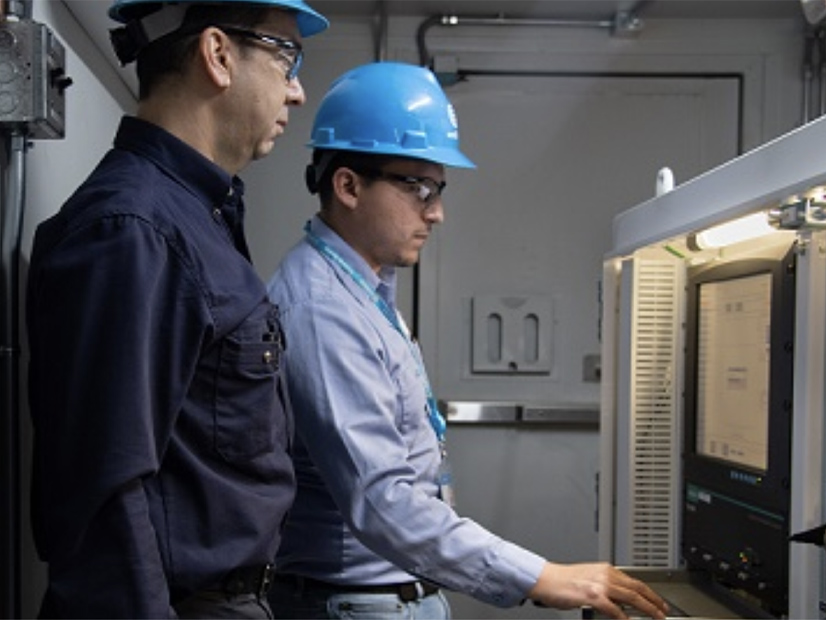
NYISO on Monday presented stakeholders a subset of draft responses to FERC’s data request regarding its Order 2222 compliance.
NYISO’s response must explain how its distributed energy resource (DER) participation model complies with Order 2222 and propose additional tariff revisions, as necessary. The ISO has not identified tariff revisions required in order to respond to the commission thus far, said Harris Eisenhardt, market design specialist.
The commission on Oct. 1 gave CAISO and NYISO 30 days to explain details of the treatment of distributed energy resources and aggregations described in their Order 2222 compliance filings. It later granted NYISO’s request for an extension until Nov. 19 (ER21-2460). (See FERC Asks Details from CAISO, NYISO on Order 2222 Compliance.)
Market Rules
Most of the presentation focused on coordination between the ISO, aggregator and distribution utility, particularly the role of the utility.
One question concerned rules to prevent aggregators from receiving compensation twice for the same services (e.g., in an ISO market and a state program).
The commission asked, “What role, if any, will the distribution utility play in helping NYISO verify that an aggregator is not providing the same or substantially similar service in the NYISO-administered markets?”
As previously stated in its filing, Eisenhardt said, NYISO plans to rely on aggregators’ self-attestations that their DERs are not double dipping.
One stakeholder said that some answers for the attestations may require a level of operational detail that might not necessarily be known or could still be in flux at the time of enrollment and asked whether it would be necessary to amend the attestation if circumstances changed.
Eisenhardt said there will be a document to provide guidance on which programs are compatible with specific NYISO services.
“It is the expectation of NYISO that the aggregator would be able to use that during enrollment to make an informed decision on what the planned operation of the aggregation and individual DER would be and that it would not conflict or that they do not believe it would conflict with the services as laid out in that guidance document,” Eisenhardt said. “If there were modifications following the attestation, NYISO would expect there would be an amendment and would be informed of those changes as needed.”
Another market participant said that while Order 2222 directs that the utility should have up to 60 days to complete evaluation of whether there would be any safety or reliability impacts to its distribution system, it did not specify what happens at the end of the 60-day window if there are issues that take longer to evaluate.
NYISO has dispute resolution procedures in its tariff already that could be reset for Order 2222 compliance, if necessary, NYISO senior attorney Greg Campbell said.
“We’ll see if the commission would like us to enhance those. I think that they are sufficient as is, but more specifically, NYISO will be the one making the final decision on whether a DER can participate in its markets,” Campbell said. “That decision will be informed by information provided by the utilities as well as by the aggregator and by others, so if the aggregator feels as though it needs to, it can invoke those dispute resolution procedures in section 11 of the NYISO services tariff.”
Implementation Details
One stakeholder asked how transmission node mapping will be made available to market participants.
The ISO plans to put out a list of all the transmission nodes for the New York Control Area, said Michael Ferrari, market design specialist. Developers will have to work with the transmission owner to find out how nodes map up.
“From the NYISO’s perspective, we were identifying the points on the transmission system, but the mapping from distribution to transmission will have to go through the transmission owner, so presumably the question of whether or not there will be some tool available will be one that needs to be put to the individual distribution utilities,” Ferrari said.
If the commission authorizes the ISO and the distribution utilities to take 90 days to evaluate changes to a DER aggregation, — which is the 30 days the commission has already authorized the ISO to take to evaluate changes and then a 60-day evaluation by the distribution utility — NYISO is going to have to change its timing for updating the transmission node list, Campbell said.
“We previously said we would provide at least 90 days’ notice of transmission node changes prior to the beginning of the capability year. Clearly, if an aggregator needs to notify the ISO 90 days before they can take effect, we need to bump up the timing of publishing transmission node changes,” Campbell said. “One hundred fifty days prior would provide sufficient lead time.”
The ISO expects to release the number of nodes for deployment by the end of this year or the first quarter of next year, and DER deployment is still anticipated for the fourth quarter of next year, Ferrari said.


